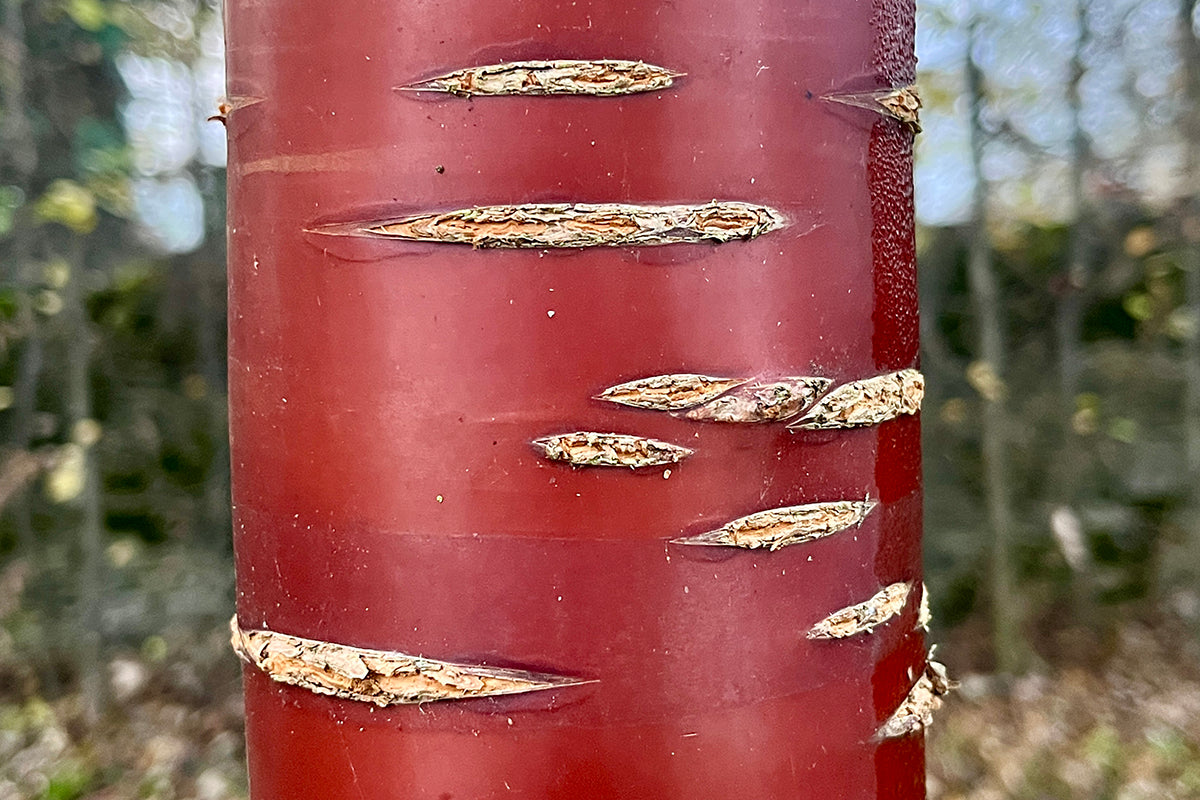Tree bark

With leaves blown from trees, flowers absent from most perennials and shrubs, and the sky often grey, winter can be a time when finding things of interest in the garden is a challenge. It’s now that gardeners start to look for beauty in the detail. Frost rimed grasses, mosses, fungi, catkins, and seed heads can keep us busy with a camera for many hours.
In the Genus garden we’ve started to notice the tree barks with their variety of colours and textures. The smooth, stark-white trunks of the Himalayan birch Betula utilis var. Jacquemontii; he Black River birch Betula nigra with its shaggy overcoat of peeling paper-like bark; and the contrasting glossy red of Prunus serrula, the Tibetan cherry. It’s the latter that caught our attention this week. The eye catching bark much like many of the nearby birches contains horizontal scar-like markings. These are lenticels and the name derives from their typical lens-like shape.
These small openings that occur in the surface of many woody plants enable gas exchange without compromising the plant's protective barrier. While bark typically acts as a protective shield, living cells within the stems or trunks still require oxygen for respiration and need to release carbon dioxide. The plant would suffocate if these cells were completely sealed. The lenticels are soft, spongy areas and solve this problem by controlling gas movement between the plant's interior and exterior.
Not all lenticels are as stark and noticeable as our example - cherry trees display them prominently while rhododendrons, and many other barks have more subtle versions.











